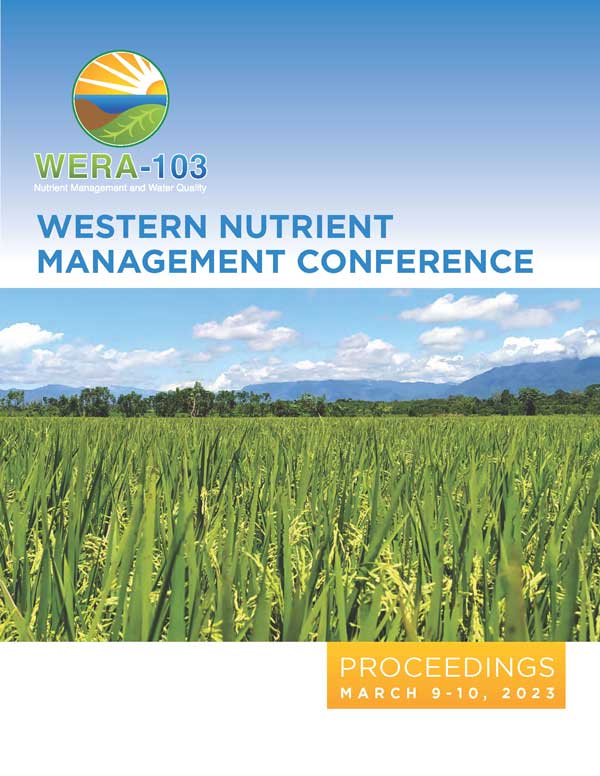Download the Conference Proceedings
Proceedings
Topics
| Filter results3 paper(s) found. |
|---|
1. Phosphorus and Potassium How Low Can You Go In Alfalfa?Tissues testing whole alfalfa plants at harvest can more accurately direct nutrient decisions. Developing critical nutrient levels in-season improves recommendations and applications, saving producers time, expense and effort since many growers take samples for hay quality. These three experiments were designed as follows: 1) Phosphorus (P) Rate study with differing rates of P2O5 using monoammonium phosphate (MAP); including: 0, 30, 60, 120, 240 lb P2O5... S. Norberg, S. Fransen, J. Harrison, D. Llewellyn, L. Whitefield |
2. Twenty Years of Cotton Nitrogen Management and Cycling Trials in the Southwest: What Have We Learned?Over 20 site-years of nitrogen fertilizer management and cycling trials have been conducted in Lubbock Texas and Maricopa Arizona from 1998 to 2019. Furrow, overhead sprinkler (OSI), subsurface drip irrigation (SDI) were used. Soil profile nitrate (0-36 inches in Texas and 0-72 inches in Arizona) was sampled and tested for in all trials. Nitrogen-15 labeled fertilizer was used for two years in Texas and for two years in Arizona. Canopy reflectance was measured in every... K.F. Bronson |
3. Residue Decomposition of Surface and Incorporated Barley, Corn, and Wheat at Varying Fertilizer-N RatesCereal crops are commonly grown in southern Idaho and most parts of the western United States. These cereal crops are routinely harvested for their grain with the remaining plant material (chaff, stems, leaves, etc.) left in the field to decompose prior to planting of following spring crops. Understanding the effects of post-harvest residue management on barley (Hordeum vulgare L.), corn (Zea mays L.), and wheat (Tritcum aestivum L.) residue is important for optimiz... C. Rogers, G. Thurgood, B. Dari, J. Marshall, O.S. Walsh, K. Schroeder, G. Loomis |
